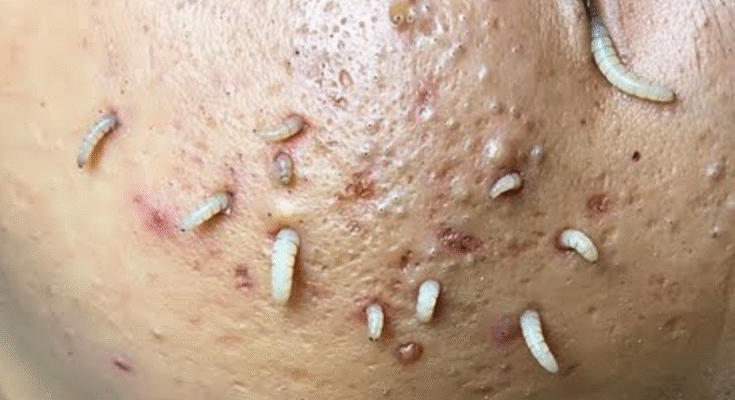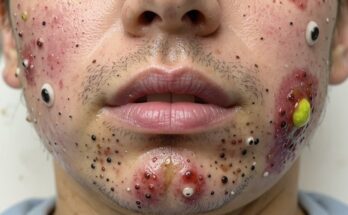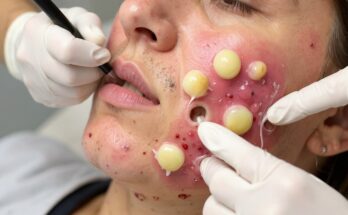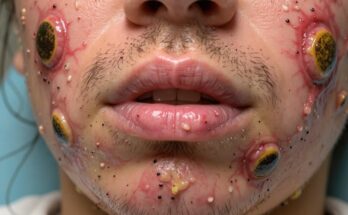Popping pimples is one of the most common skincare habits in the world. Many people do it out of impatience, curiosity, or the desire to quickly “fix” a blemish. However, not all popping is the same. In fact, there is a huge difference between safe and unsafe pimple popping — and knowing that difference can determine whether your skin heals cleanly or ends up with scars, dark marks, and infections.
While dermatologists generally recommend never popping pimples at home, the reality is that many people still do it. So understanding the proper techniques, timing, and precautions can help you avoid unnecessary skin damage. Here’s a clear and practical guide to the difference between safe and unsafe popping.
1. Safe Popping Starts Only When the Pimple Is Ready
One of the most important differences between safe and unsafe popping is knowing when to do it.
Safe popping
-
The pimple has a visible white or yellow head.
-
The surface looks soft and elevated.
-
It feels like it’s naturally close to bursting.
-
Minimal pressure is needed to release the fluid.
Unsafe popping
-
The pimple is deep under the skin (like cysts or nodules).
-
No whitehead is visible.
-
It hurts to touch.
-
You need to squeeze hard for anything to come out.
-
The skin looks red, swollen, and inflamed.
Deep pimples should never be popped, because doing so almost always leads to internal ruptures, infections, and long-term scarring.
2. Safe Popping Uses Clean Tools — Not Fingernails
Your fingers carry bacteria even after washing. Your nails can cut the skin. Unsafe popping often involves squeezing with dirty hands or applying too much force.
Safe popping
-
Wash hands with soap.
-
Clean the skin with warm water and gentle cleanser.
-
Use an alcohol wipe to disinfect the area.
-
Sterilize tools (like comedone extractors) with alcohol.
-
Use clean cotton swabs instead of nails.
Unsafe popping
-
Using fingernails or pressing hard from different angles.
-
Using sharp objects like tweezers, needles, or pins at home.
-
Ignoring hygiene, which increases infection risk.
Even though tools exist for extraction, using unsterilized tools is extremely dangerous.
3. Safe Popping Applies Gentle, Minimal Pressure
The technique you use matters. Safe popping involves controlled and gentle pressure with minimal force.
Safe popping technique
-
Apply warm compresses first to soften the pimple.
-
Press gently from the sides using cotton swabs.
-
Stop immediately if nothing comes out with light pressure.
-
Never try more than 1–2 presses.
Unsafe popping
-
Squeezing aggressively until the skin turns red or bruised.
-
Digging into the skin to force something out.
-
Pressing for too long or from multiple angles.
-
Continuing after the pimple bleeds.
Excessive force is the main cause of pore wall damage, deep scars, and bacteria spreading under the skin.
4. Safe Popping Stops When Clear Fluid Appears
After releasing the pus, a small amount of clear or slightly yellow fluid might appear. This is a sign that you should stop.
Safe popping
-
White pus appears and then turns into clear fluid.
-
You immediately stop pressing.
-
You apply antiseptic or benzoyl peroxide afterward.
Unsafe popping
-
Continuing to squeeze until blood comes out.
-
Reopening the pimple repeatedly over several days.
-
Trying to remove what you think is “more stuff” inside.
Blood and excessive fluid indicate you’ve damaged deeper tissue — a major cause of dark spots and scarring.
5. Safe Popping Includes Proper Aftercare
Even a safely popped pimple is still an open wound that needs care.
Safe aftercare
-
Apply an antibacterial treatment (like benzoyl peroxide).
-
Use a hydrocolloid acne patch to protect the wound.
-
Keep hands off the area as it heals.
-
Avoid makeup over the wound for 24 hours.
Unsafe aftercare
-
Touching the pimple throughout the day.
-
Applying makeup immediately.
-
Using harsh products like alcohol or toothpaste.
-
Skipping cleansing or leaving bacteria on the wound.
Incorrect aftercare causes infection, redness, and higher chances of dark marks.
6. Safe Popping Never Involves Deep Cysts or Nodules
One of the most important distinctions: deep acne should not be popped, ever.
Deep pimples include:
-
Cystic acne
-
Nodular acne
-
Underground pimples
-
Painful red lumps with no head
These can only be treated with:
-
Warm compresses
-
Acne patches
-
Prescription creams
-
Dermatologist extraction or injections
Trying to pop deep acne guarantees permanent scars.
7. Safe Popping Happens Under the Right Conditions
Surprisingly, the environment matters.
Safe popping happens when:
-
You’re in good lighting
-
Your hands and tools are clean
-
You have time and patience
-
You’re not stressed or rushing
Unsafe popping happens when:
-
You’re in the car, bathroom, or dim room
-
You’re popping pimples without cleaning your face
-
You’re doing it impulsively out of frustration
-
You’re using a dirty mirror or surfaces
Most unsafe popping happens in moments of impatience or emotional stress.
8. Safe Popping Means You Don’t Pop Repeatedly
Safe approach
Pop once — if nothing comes out easily, leave it alone.
Unsafe approach
-
Trying again hours later
-
Reopening the wound the next day
-
Picking at scabs
This leads to scarring and post-inflammatory hyperpigmentation.
9. Safe Popping Leaves the Skin Mostly Intact
Safe popping causes minimal trauma.
Safe signs
-
No bleeding
-
No tearing of skin
-
Little redness
-
Quick healing in 1–2 days
Unsafe signs
-
Pimple looks worse afterward
-
Bleeding or broken skin
-
Red, swollen bump
-
Pain lasting several days
-
Dark spots forming
If the skin looks damaged, it means the popping was unsafe.
Final Thoughts
The difference between safe and unsafe popping comes down to timing, technique, and aftercare. Safe popping is gentle, clean, and done only when the pimple is fully ready. Unsafe popping is rushed, forceful, and often done on pimples that should never be squeezed in the first place.



